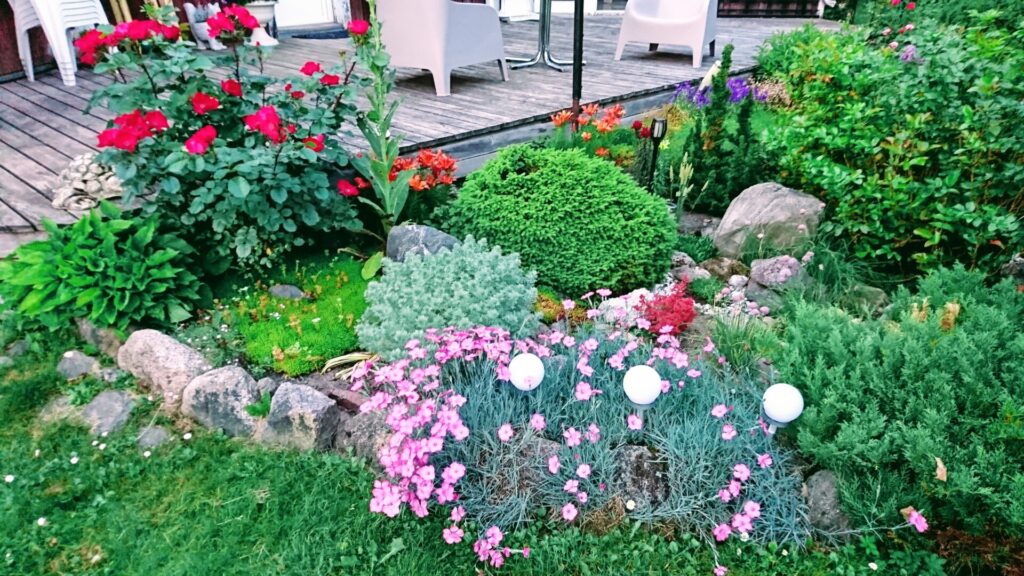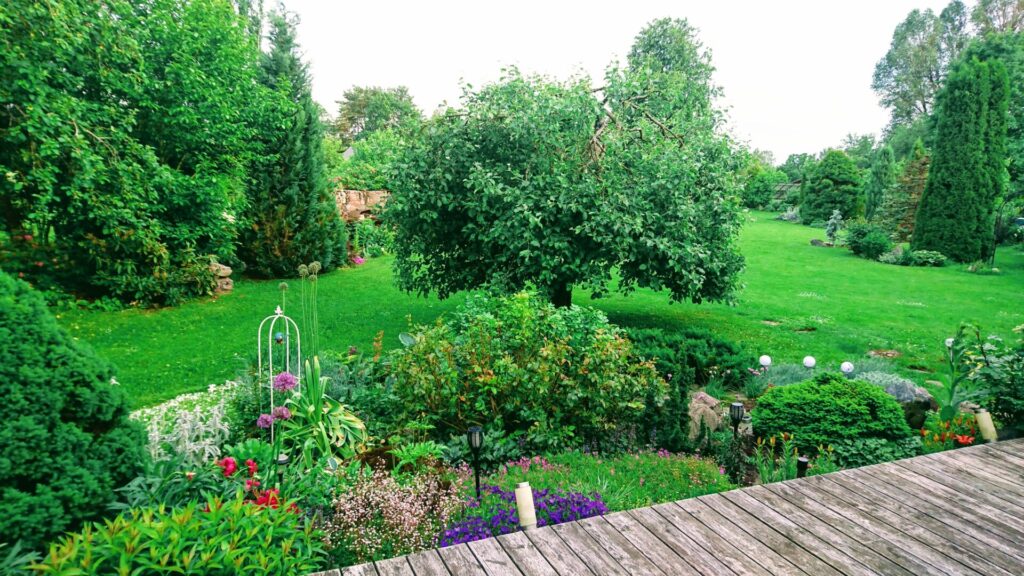Kiviktaimla oli meie esimene projekt aias peale maja ostmist. Kuna eelmine omanik tegeles endistel aegadel hobikorras turul lillede müümisega, siis olid sellel maa-alal korralikud sirged peenrad lillede kasvatamiseks. See aga ei läinud kujunduslikult kuidagi kokku meie terrassiga. Asi tundus alguses nii keeruline, et palusime appi tuttava maastikukujundaja, et ta esitaks meile oma nägemuse maja lähemast ümbrusest. Tema tehtud plaani järgi said paika nii kiviktaimla praegune kuju kui ka esialgsed suuremad kivid. Olen talle siiani väga tänulik selle käimalükkamise eest. Nimetame seda peenart siiani kiviktaimlaks, kuigi aja jooksul on selles peenras taimede osas toimunud üsna suured muudatused. Põhjuseks vana õunapuu, kes alguses tundus veetvat oma viimaseid aastaid, aga kes pideva kujunduslõikuse käigus on hakanud näitama oma tõelist palet kõrgekasvulise puuna. Kuna puule on laiust ja kõrgust paratamatult juurde tulnud, ei tundnud paljud algsed kiviktaimla asukad end tema varjus enam hästi ja said leplikumate vastu välja vahetatud. Kivid on seal endiselt, aga kas seda kooslust just enam tavamõistes kiviktaimlaks saab nimetada, ei tea. Oma algsele kasvukohale jäid selle ala algsetest elanikest läiklehine mahoonia ja suur punane varane pojeng.
The rockery was our first project in the garden after buying the house. Since the previous owner used to sell flowers at the market as a hobby, this land had good straight beds for growing flowers. However, it didn’t go with our terrace in terms of design. It seemed so complicated, that we asked to help a landscape designer we know us present his vision of the immediate surroundings of the house. According to the plan he made, both the current shape of the rock garden and the original larger stones were established. I am still very grateful to him for starting it. We still call this bed a rock garden, although over time the bed has undergone quite a lot of changes in terms of plants. The reason is the old apple tree, which at first seemed to be spending its last years, but which, in the course of continuous pruning, has started to show its true face as a tall tree. As the tree has inevitably grown in width and height, many of the original inhabitants of the rock garden no longer felt comfortable in its shade and were replaced by more tolerant ones. The rocks are still there, but I don’t know if this community can be called a rock garden in the usual sense. The original inhabitants of the that area, the oregon grape and the large red early peony, remained in their original habitat.
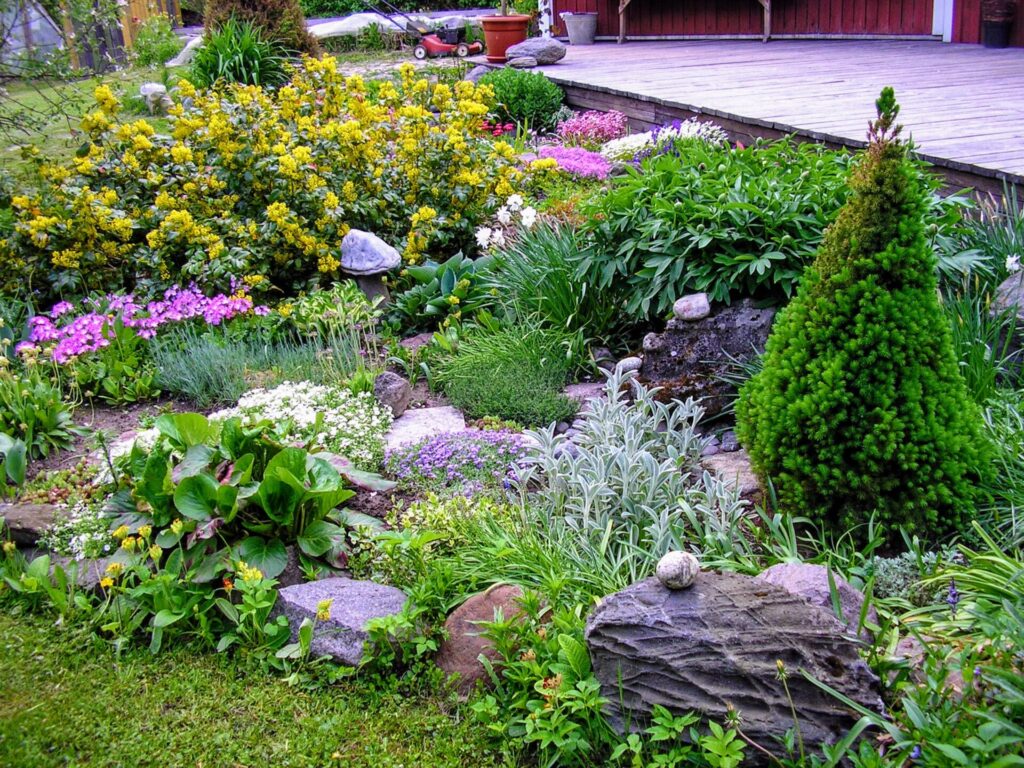


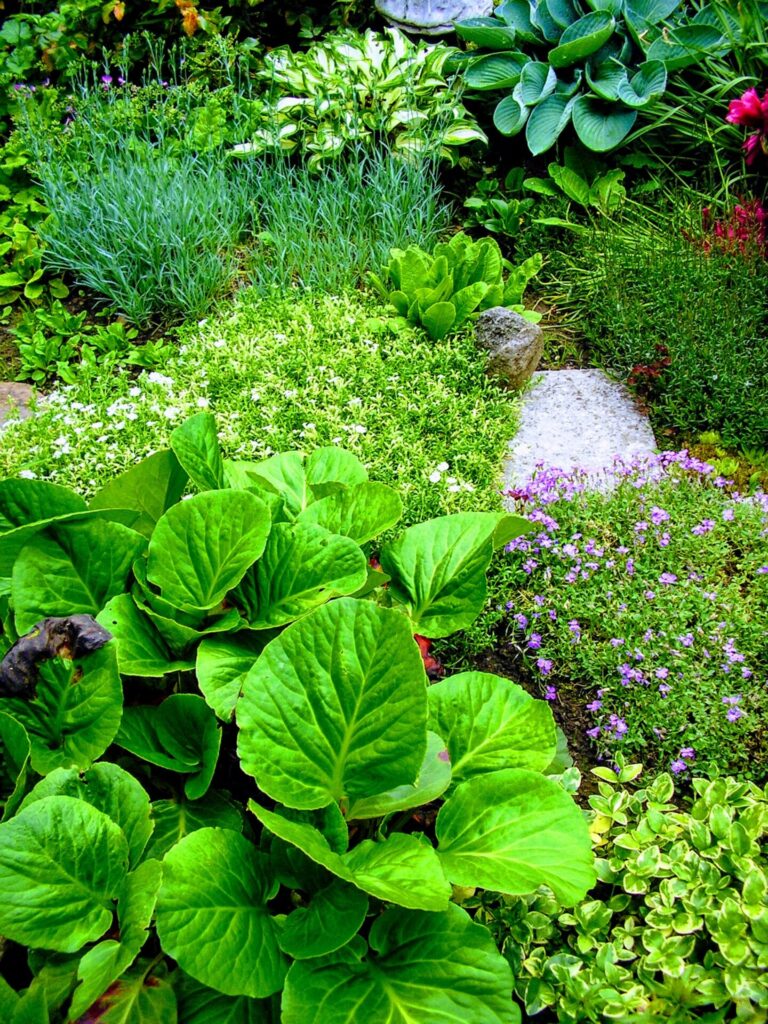
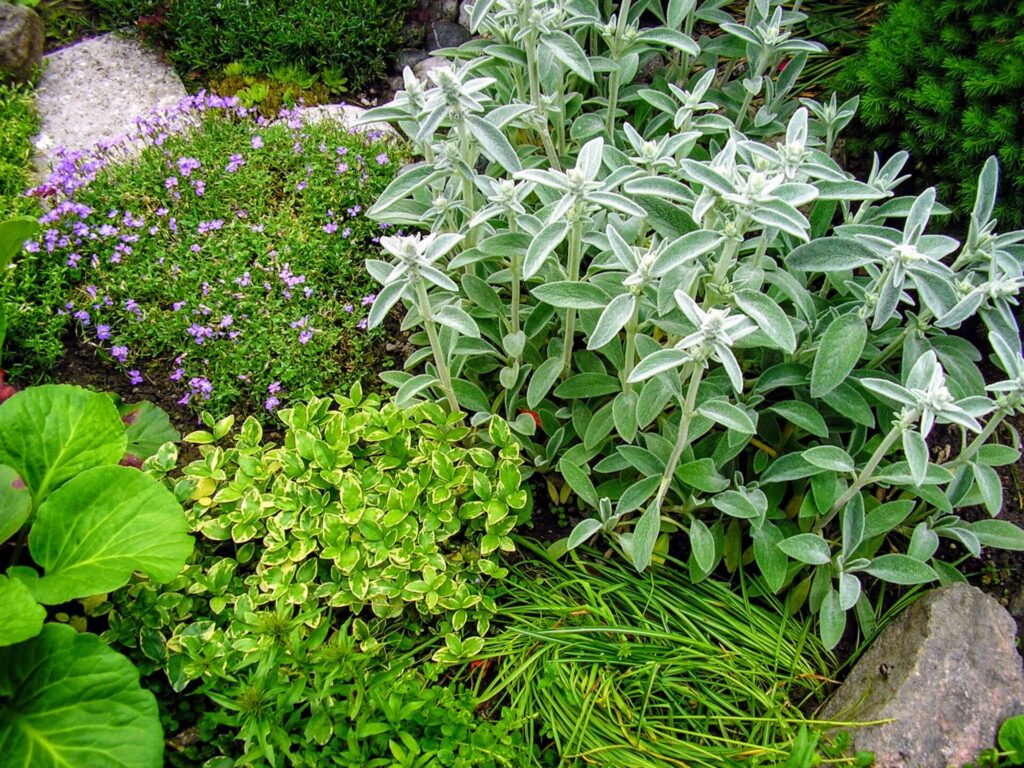
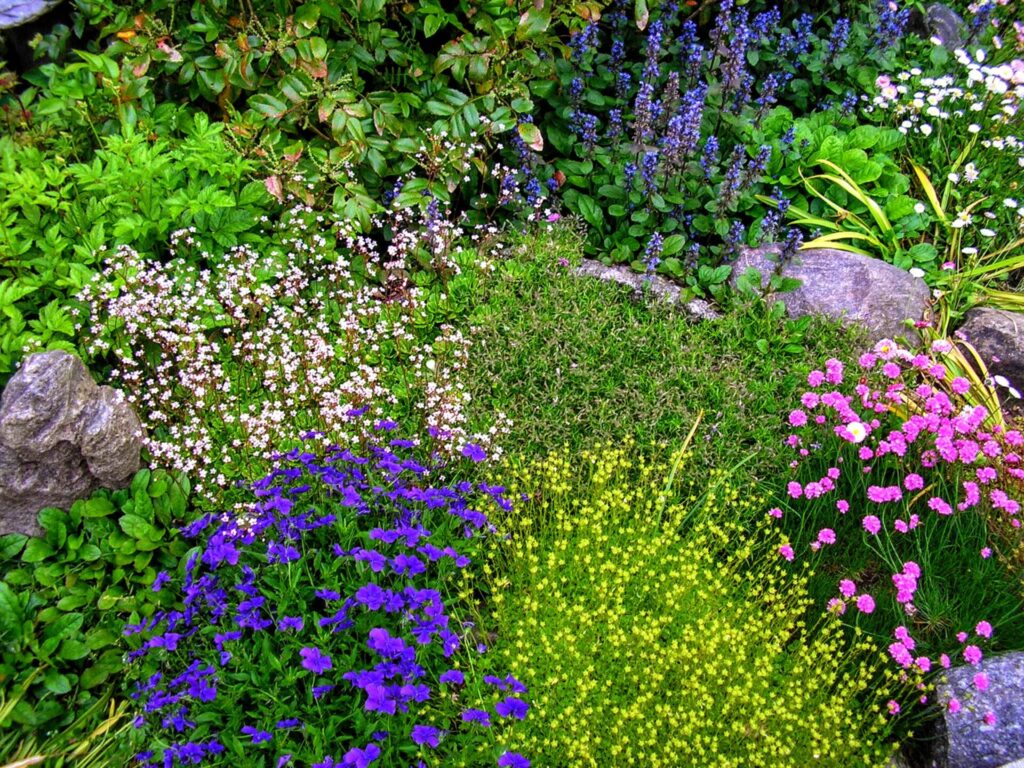
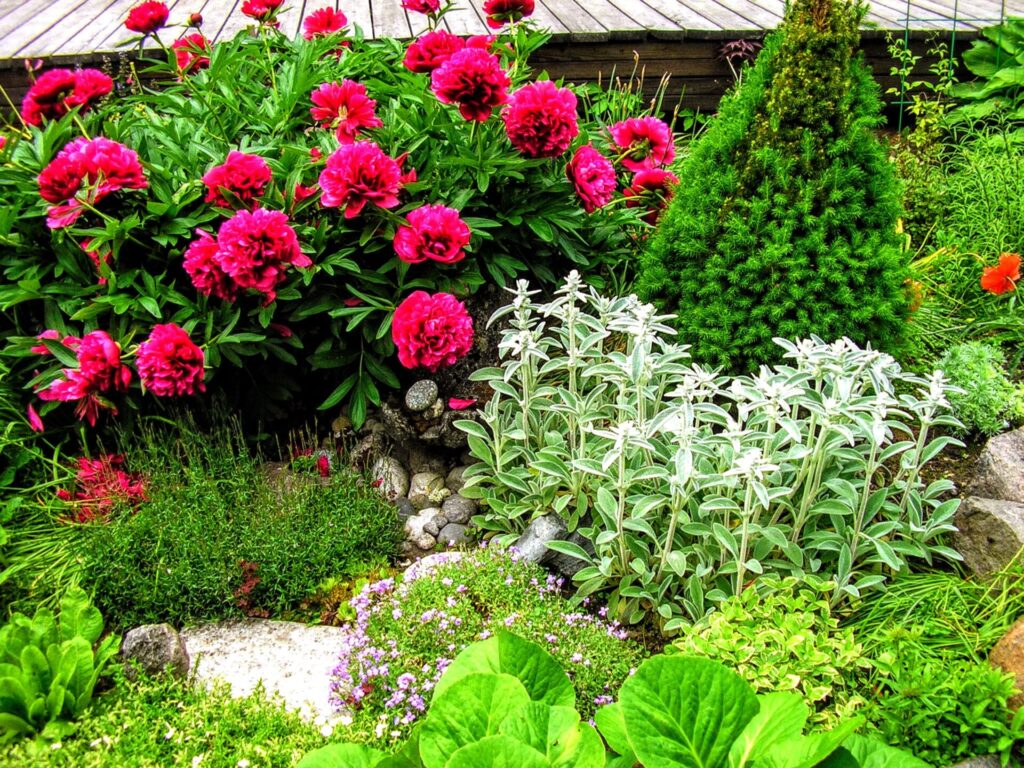
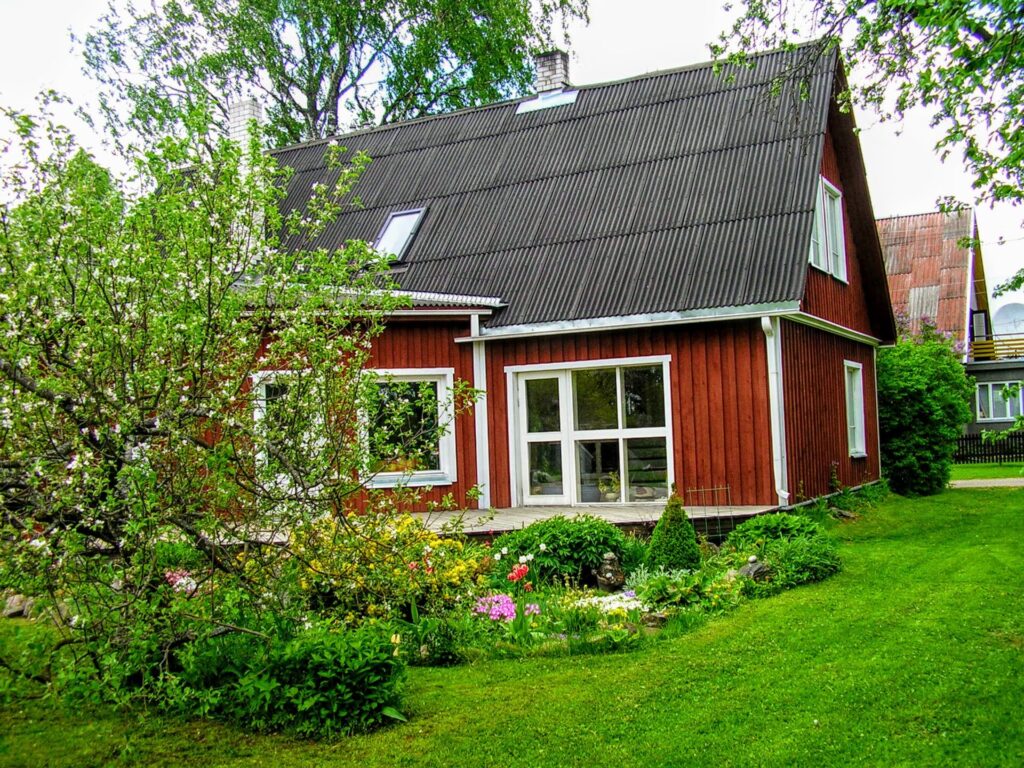
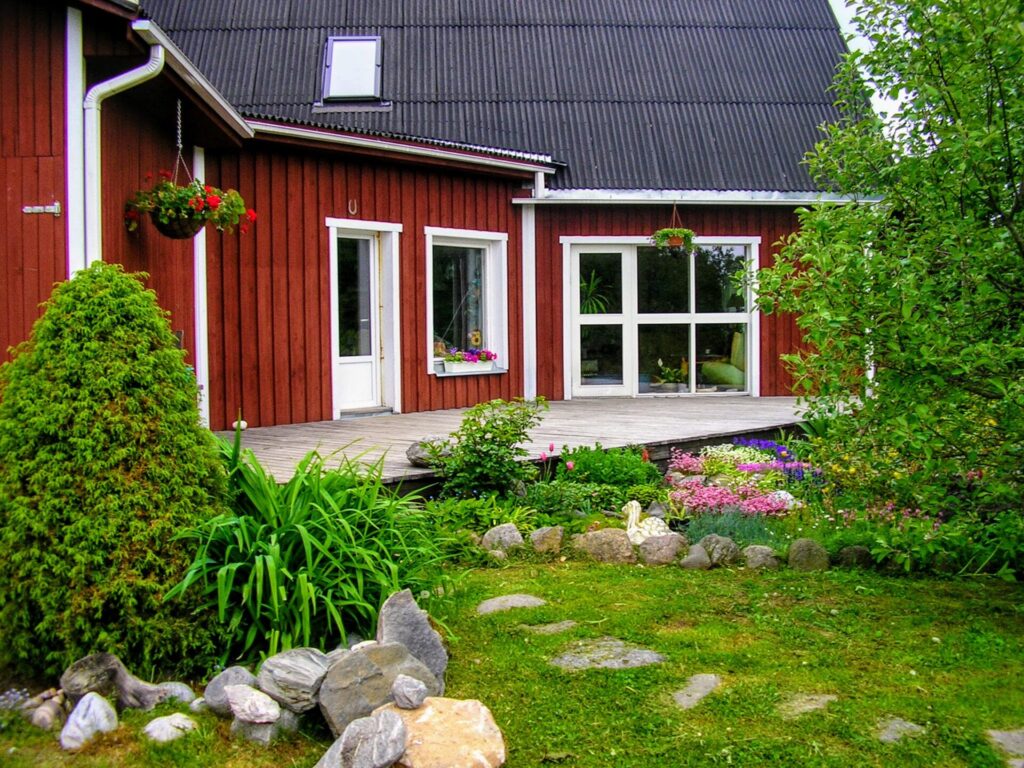
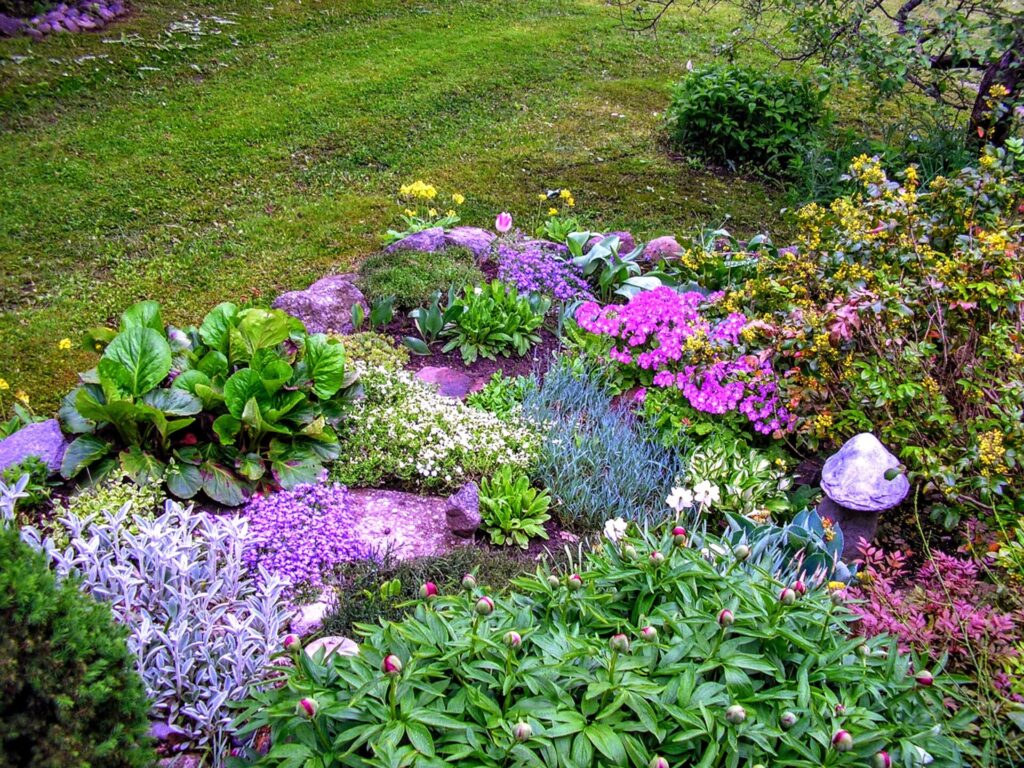

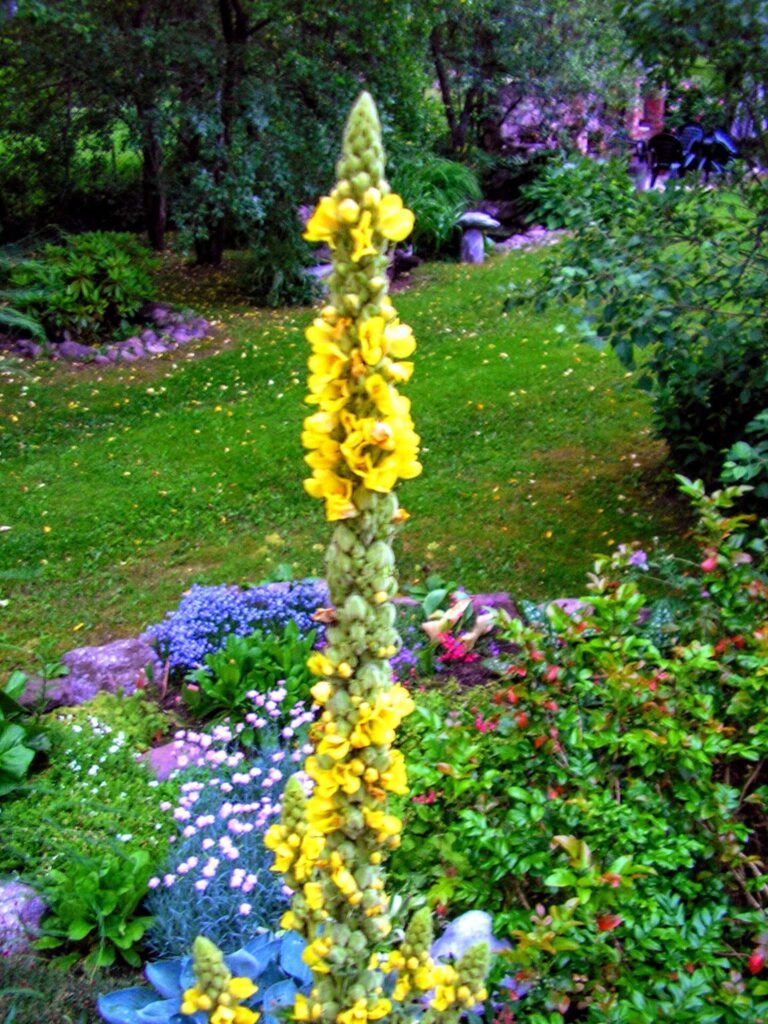

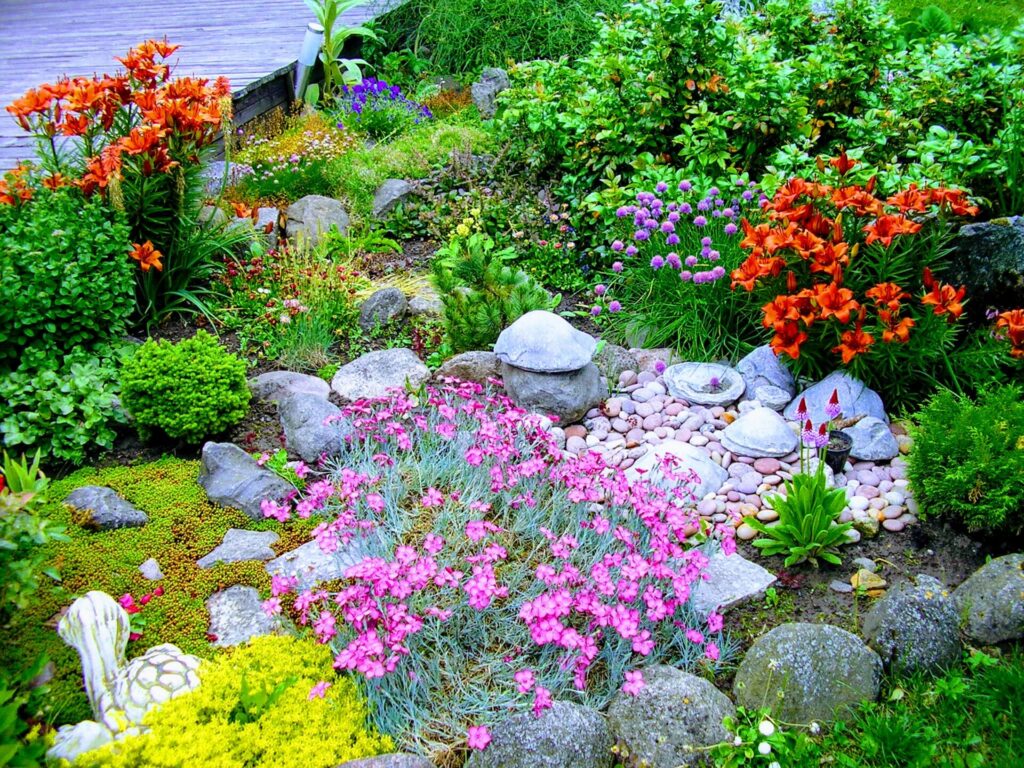
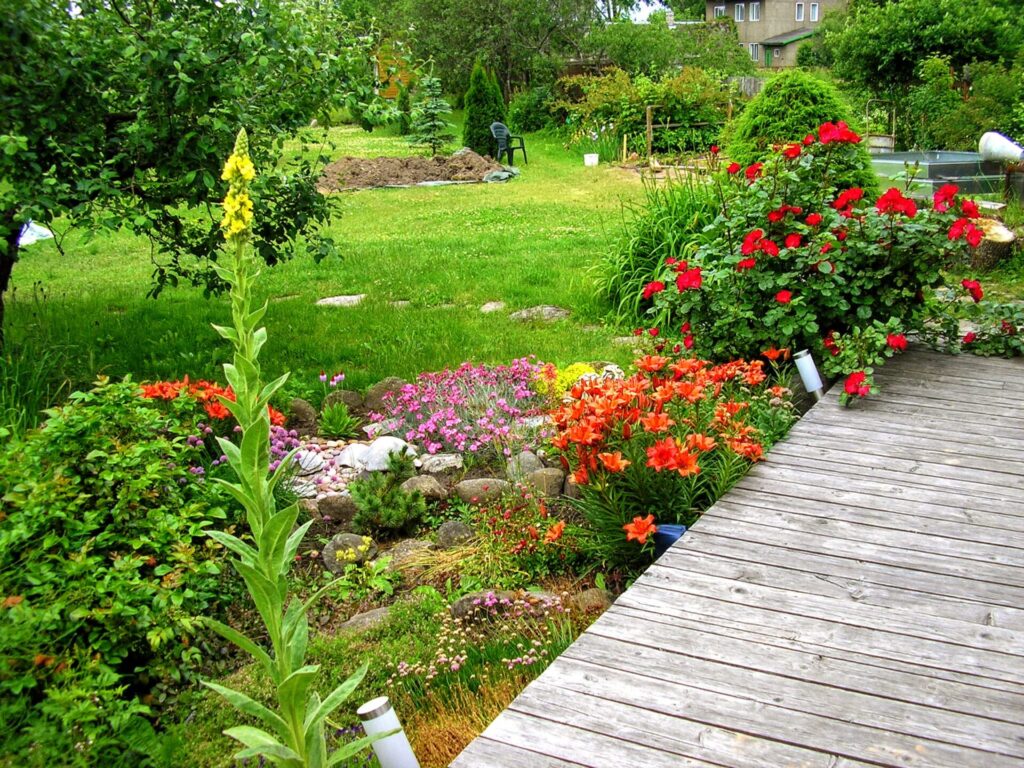

Viimastel piltidel on näha, et vana õunapuu tüvi on veel suht peenike ja võra väheldane. Järgmise kümne aastaga kasvatab ta oma tüve silmanähtavalt jämedamaks ja võra päikese ette laiemaks ning alpiaia taimed ei tunne end valgusepuuduses enam hästi.
In the last pictures you can see that the trunk of the old apple tree is still quite thin and the crown of the tree is small. Over the next ten years, it grows its trunk visibly thicker and its crown wider in front of the sun, and the plants of the alpine garden no longer feel well in the lack of light.
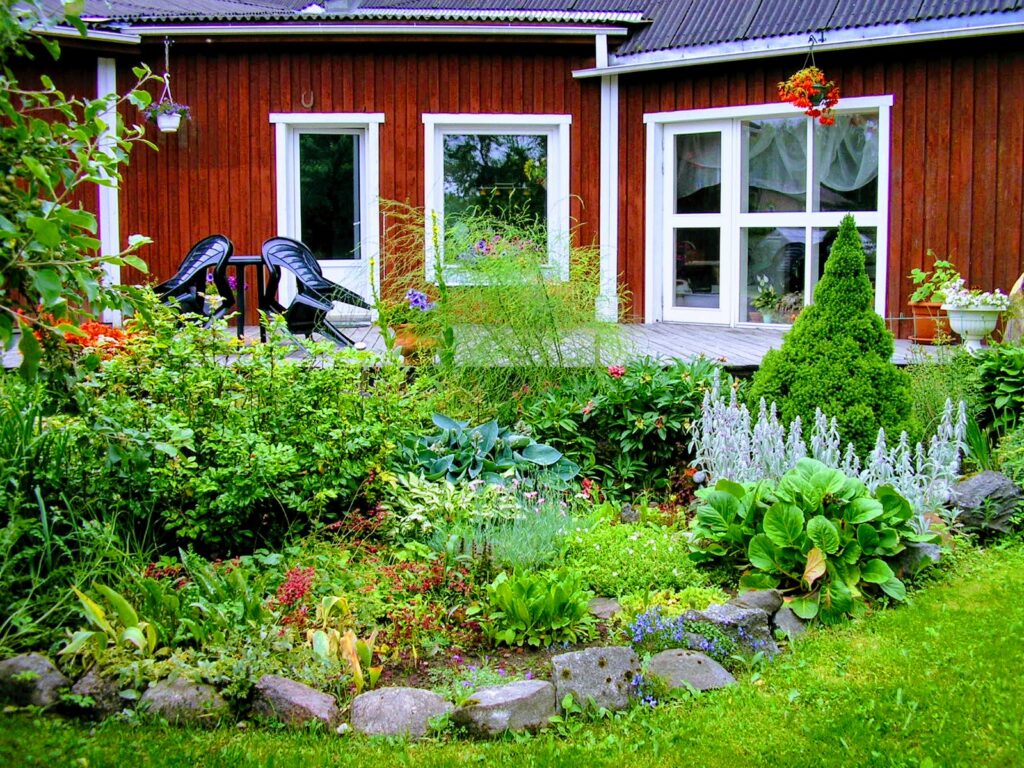

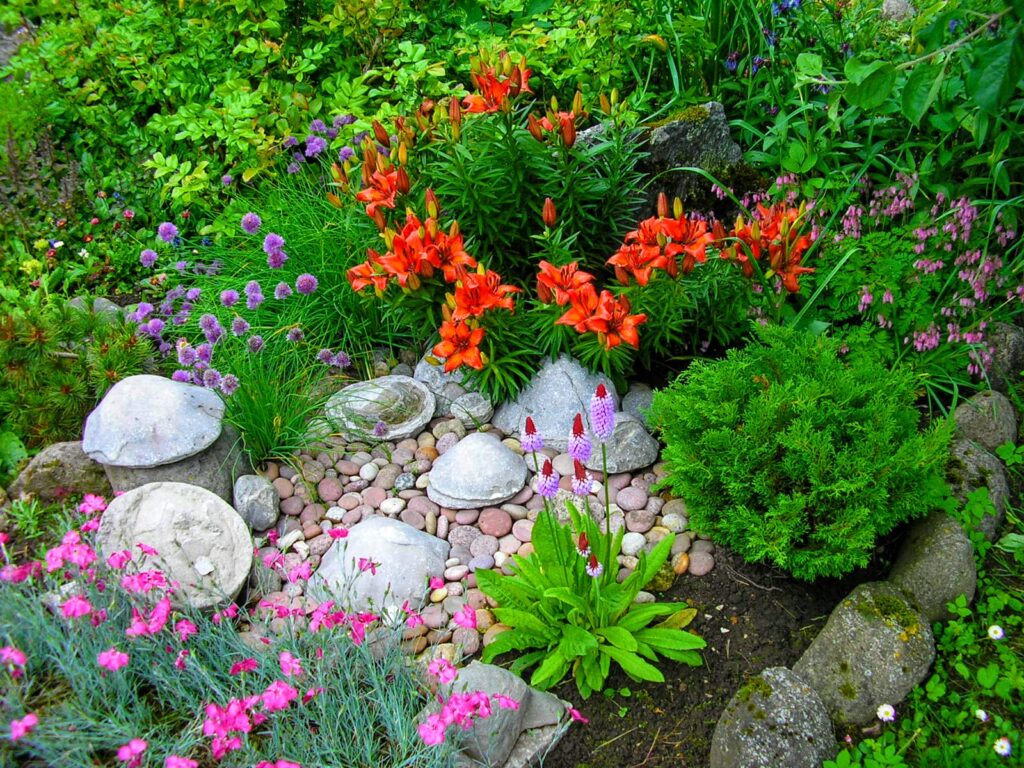
Järgmistelt piltidelt on muutused juba näha: osad alpiaia taimed on asendunud lopsakamate ja varjutaluvamate taimedega, samuti on tublisti kasvanud okkalised. Peab ütlema, et mulle endale meeldis varasem variant rohkem, aga õunapuust ei taha kohe kindlasti loobuda. Lisaks on praegune variant märksa hooldusvabam, sest alpiaia taimede vahele kippusid umbrohuseemned ikka hoopis lihtsamalt kinnituma. Noh, laisk olen ma endiselt, niisiis elagu lopsakus, kus umbrohul ruumi pole!
From the following pictures shows the changes already: some plants in the alpine garden have been replaced by more lush and shade-tolerant plants, and conifers have also grown well. I have to say that I liked the earlier version better, but I definitely don’t want to give up the apple tree right away. In addition, the current version is much more maintenance-free, because the weed seeds still tended to get attached more easily between the plants in the alpine garden. Well, I’m still lazy, so long live lushness, where there is no room for weeds!
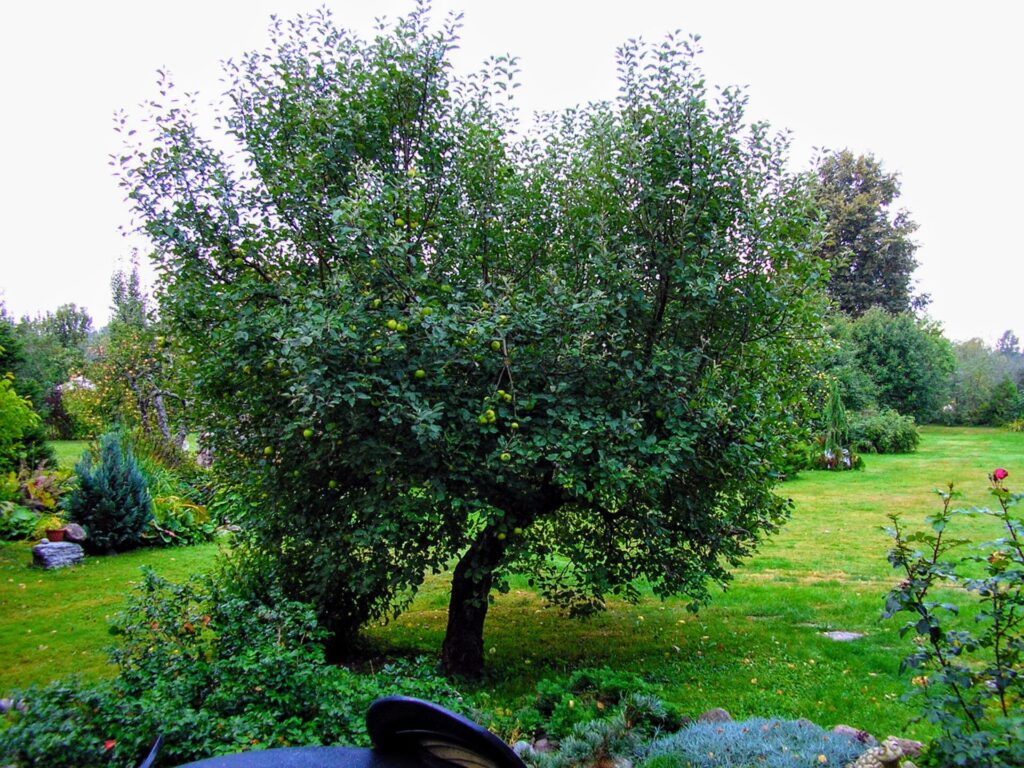
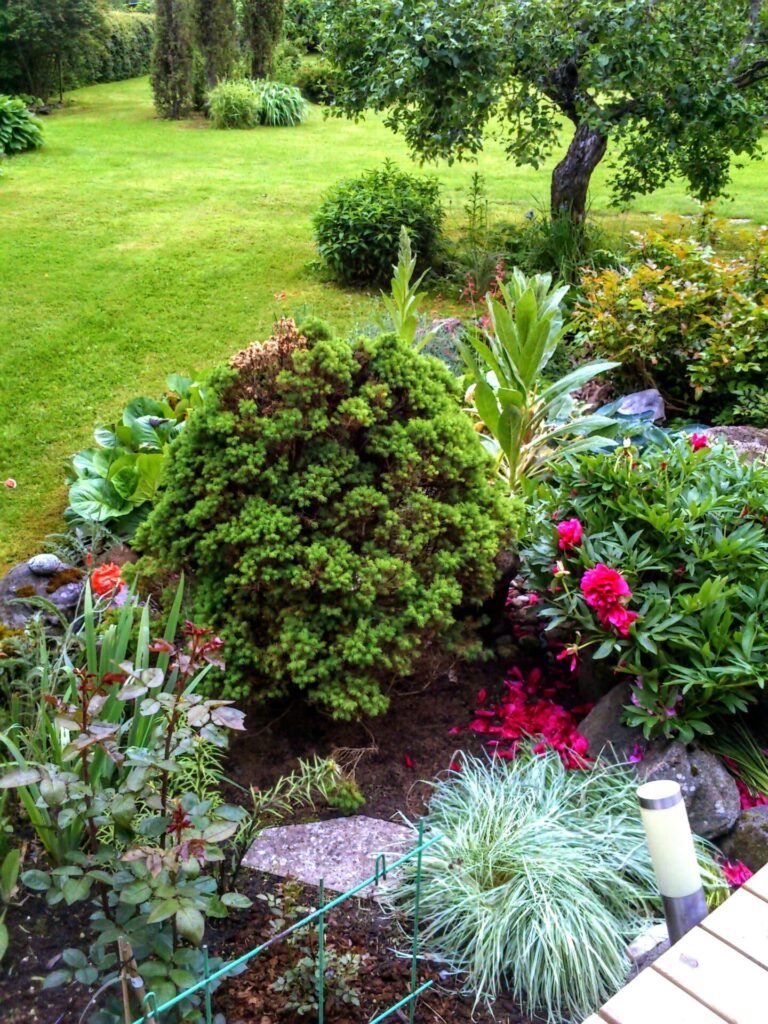
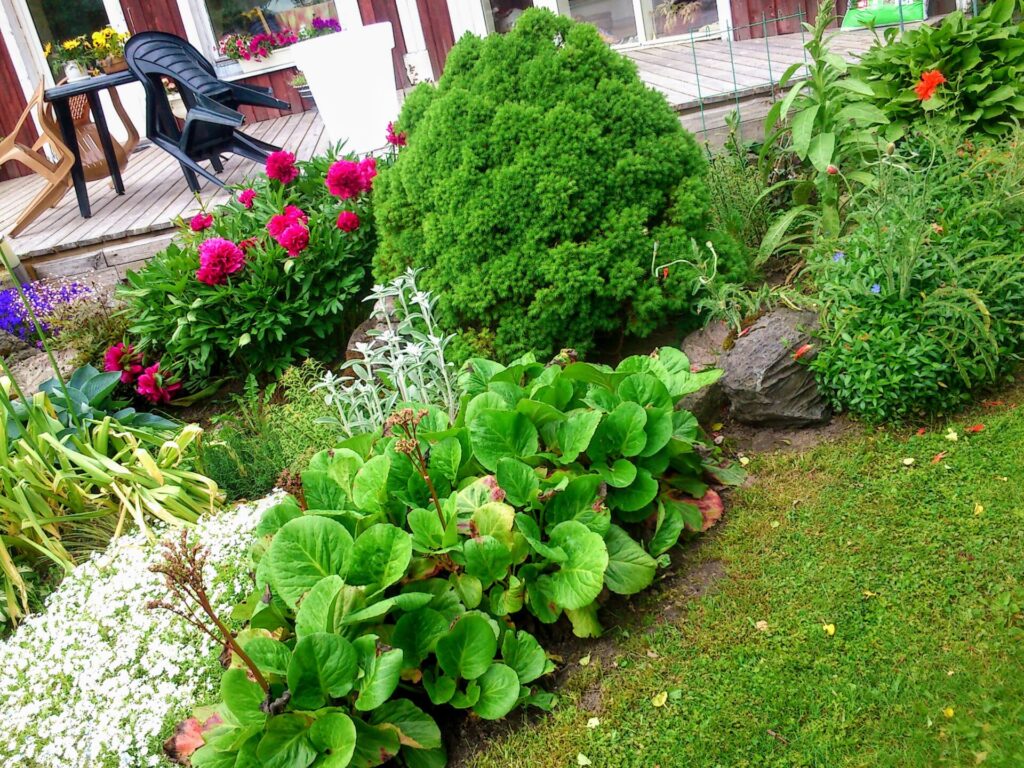
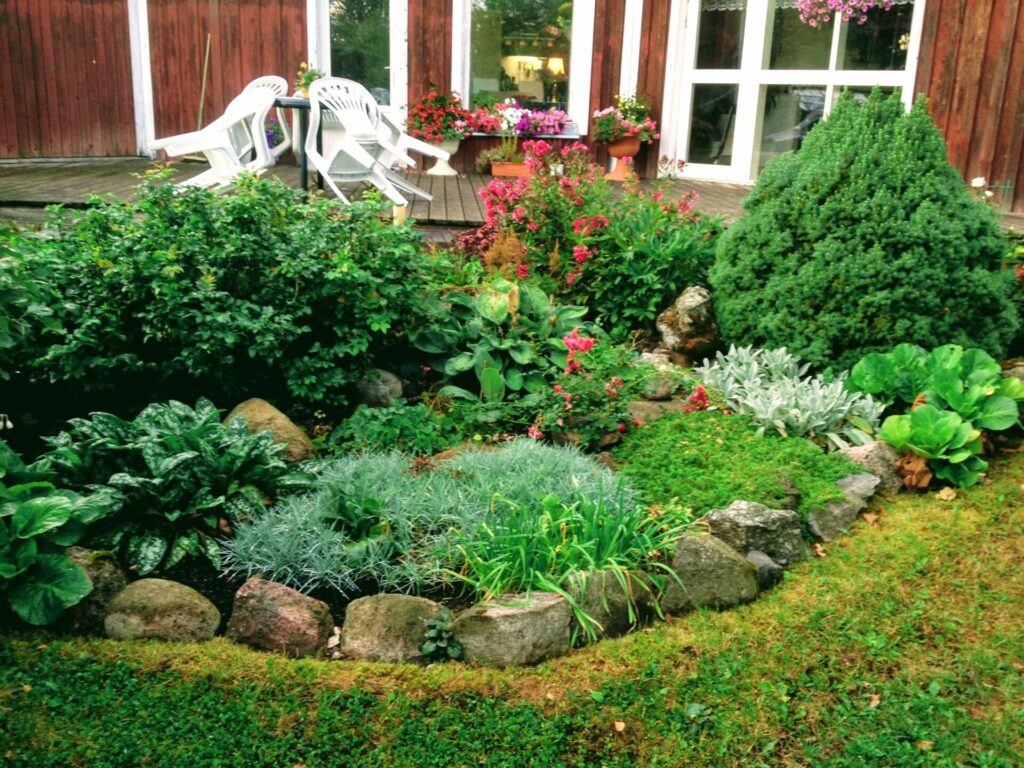

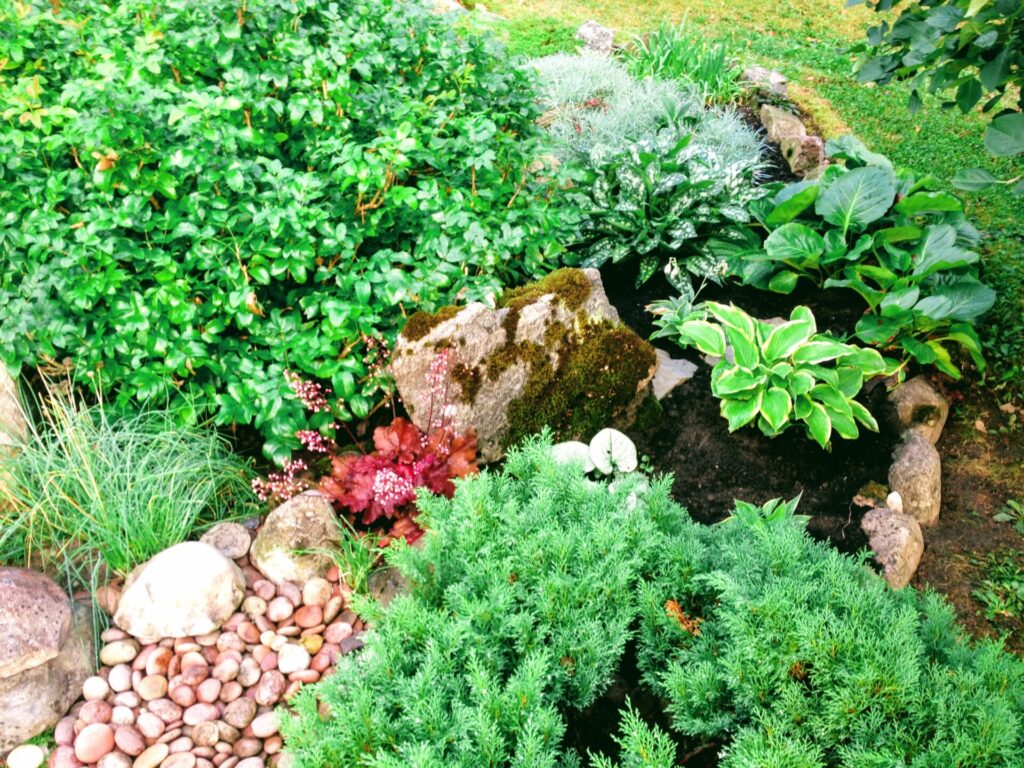

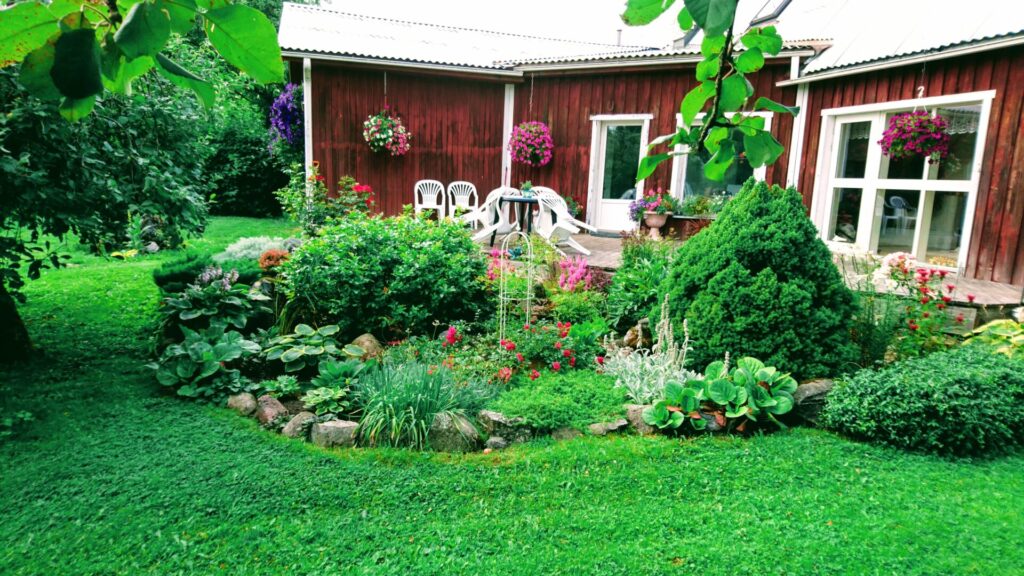
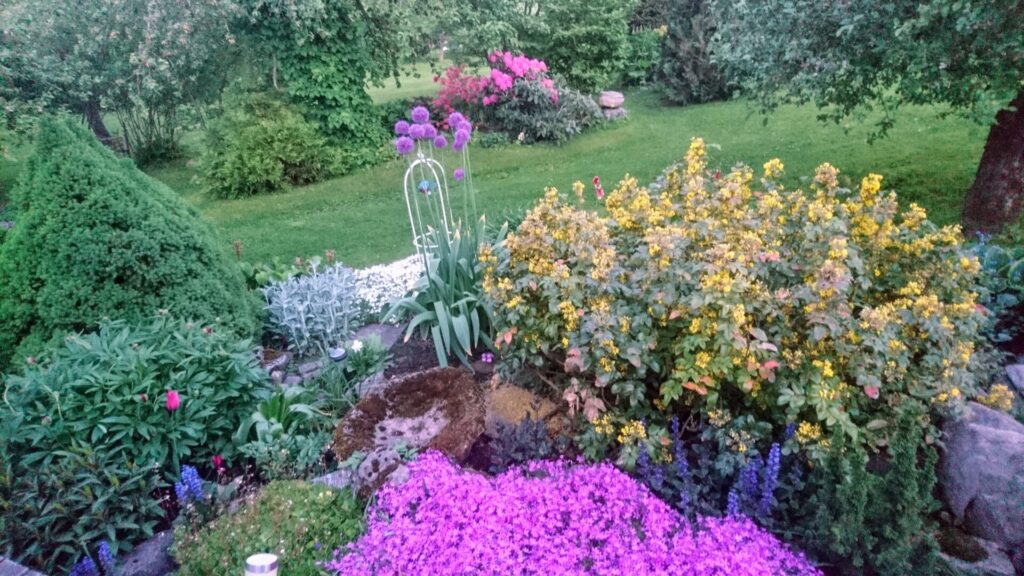

Enamik alpiaia taimi on tänaseks jäänud ainult terrassi äärde, kuhu neile päike õunapuust hoolimata peale paistab. Siin pesitsevad merikann, kivirikud, roomav leeklill, kukeharjad, hall nelk, sarvkannike. Varjulisemale alale on vanadest olijatest jäänud üks valgete õitega roomav leeklill, hall nelk ja villane nõianõges. Asenduseks on tulnud laugud, pinnakatteroos Rody. Õunapuu varju varjutaluvad taimed: sõnajalad, brunnera ja muidugi hostad, kelle kohta saab pikemalt lugeda SIIT.
Today, most of the plants in the alpine garden have remained only by the terrace, where the sun shines on them despite the apple tree. Sea thrift, rockfoils, creeping phlox, stonecrops, Cheddar pink, horned pansy nest here. In the shadier area, one creeping flame flower with white flowers, Cheddar pink and a the lamb’s-ear remain from the old ones. The plants of the alpine garden have been replaced by alliums, ground cover rose Rody. Shade-tolerant plants under the shade of an apple tree: ferns, brunnera and of course hostas, which you can read more about HERE.
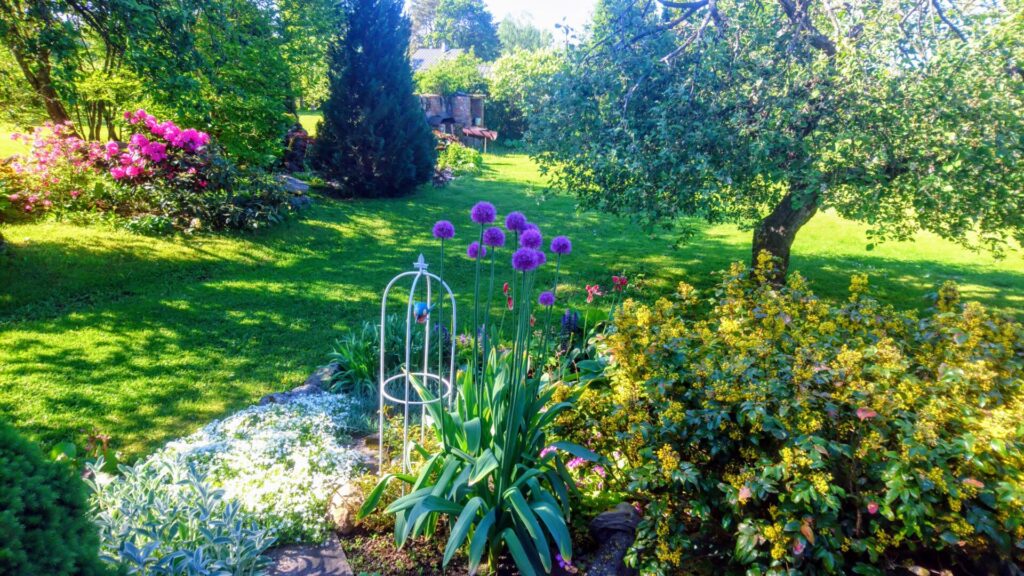
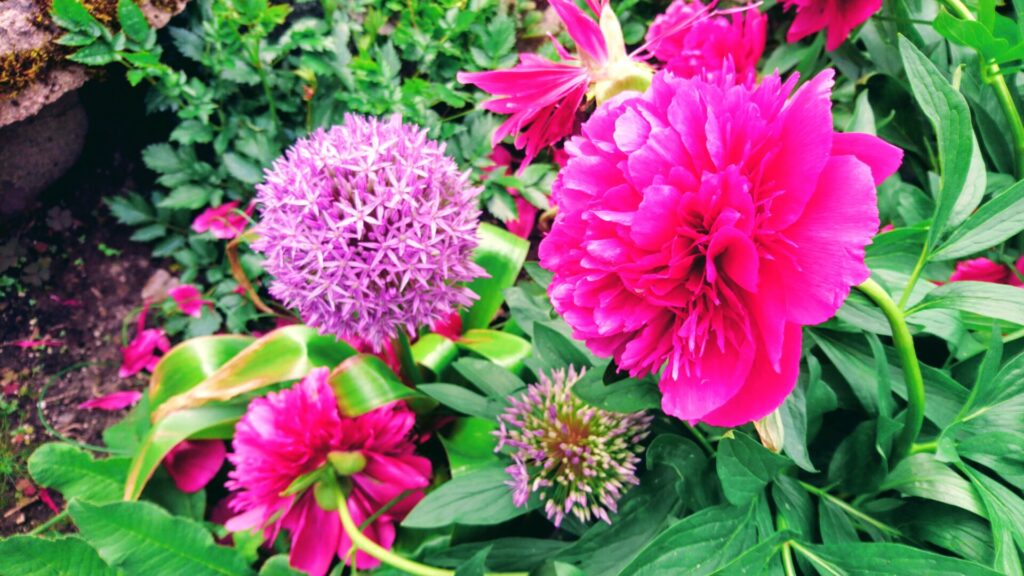

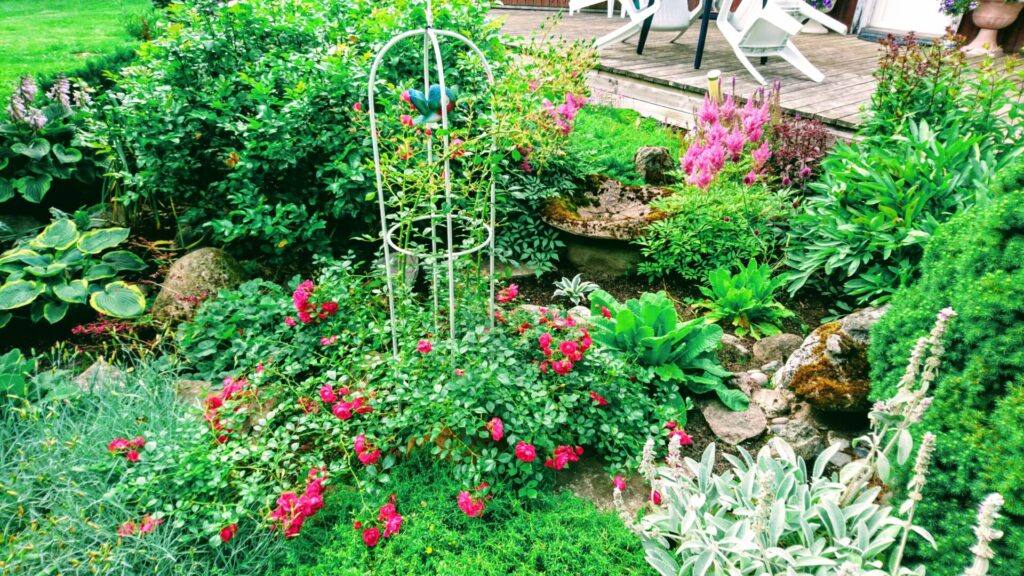
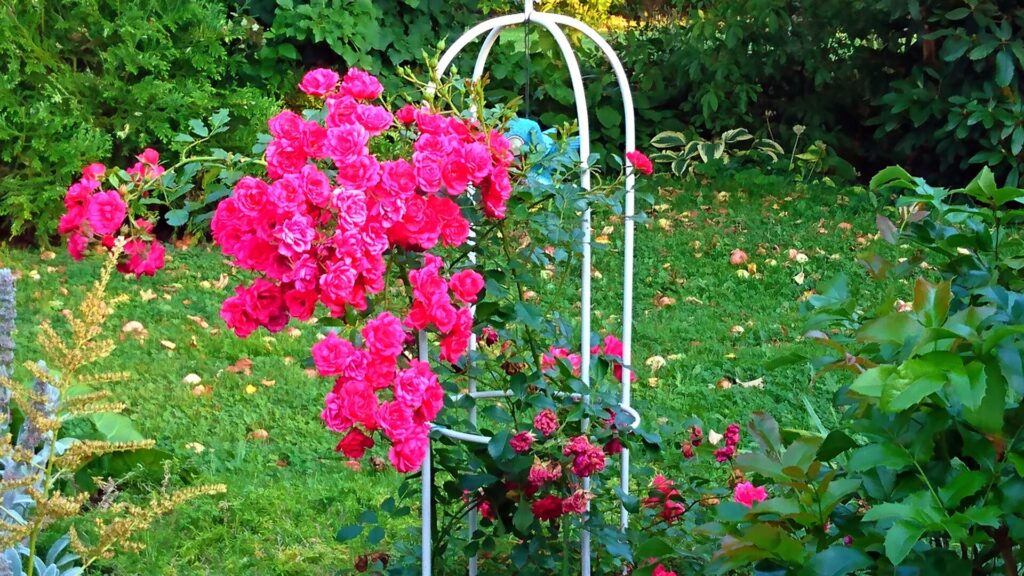
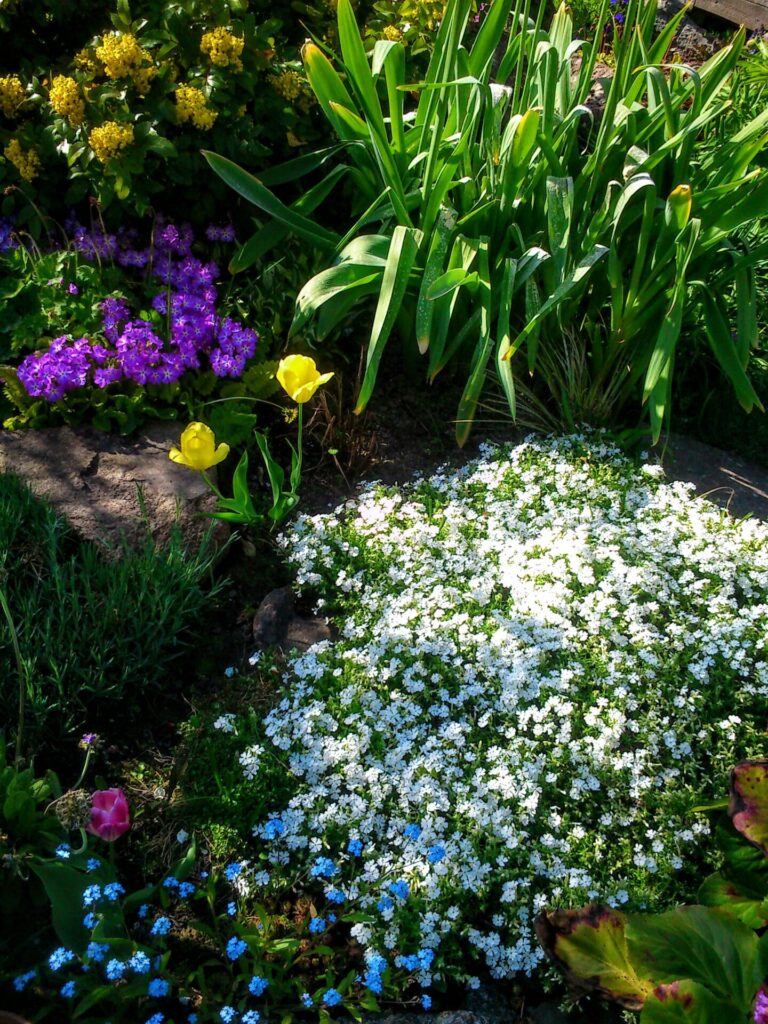

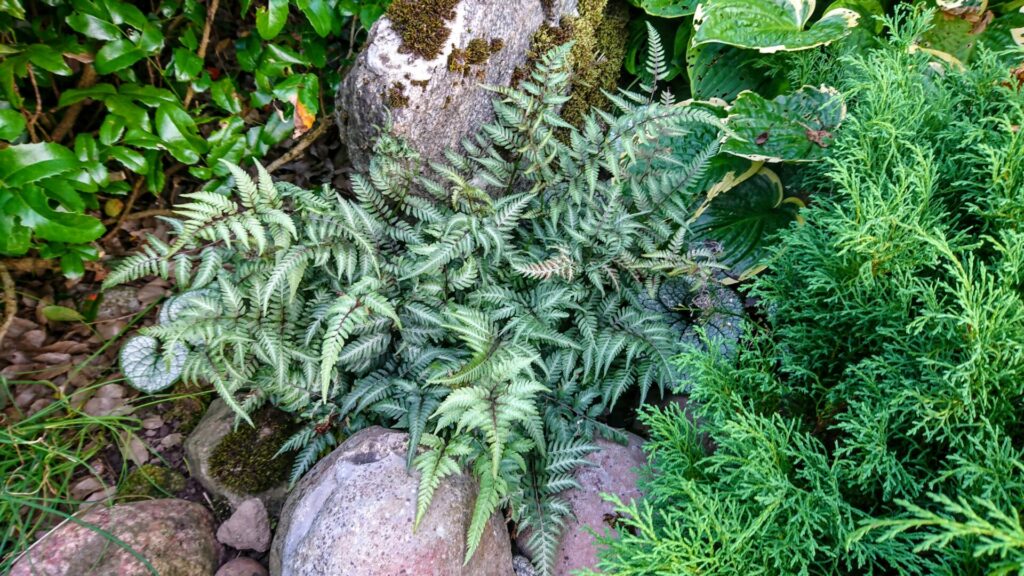


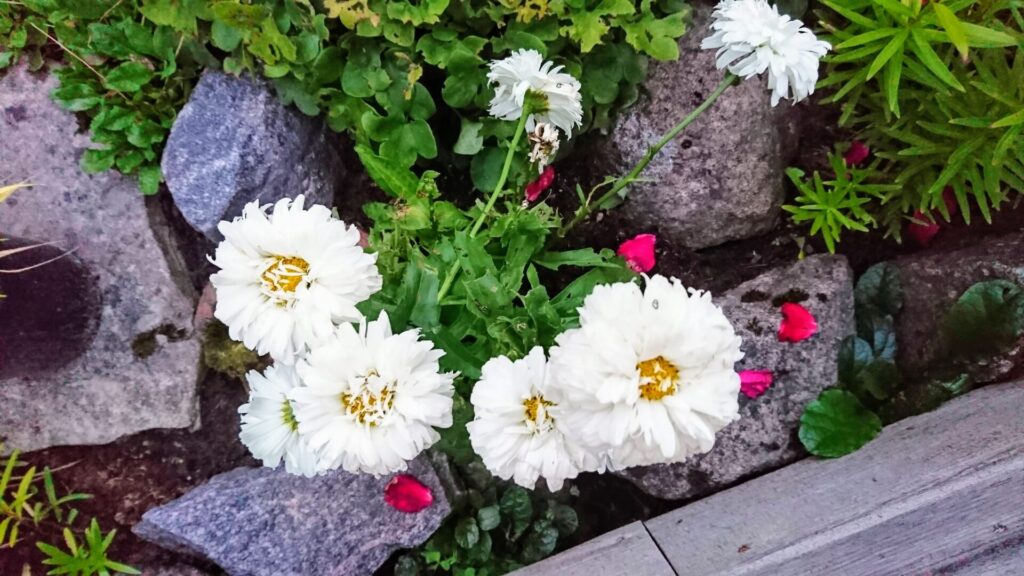
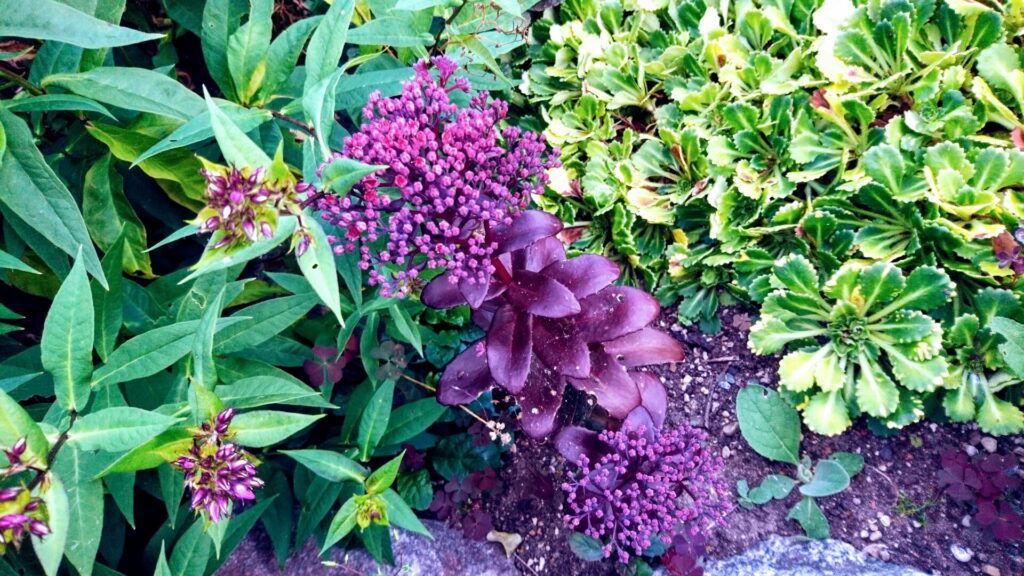
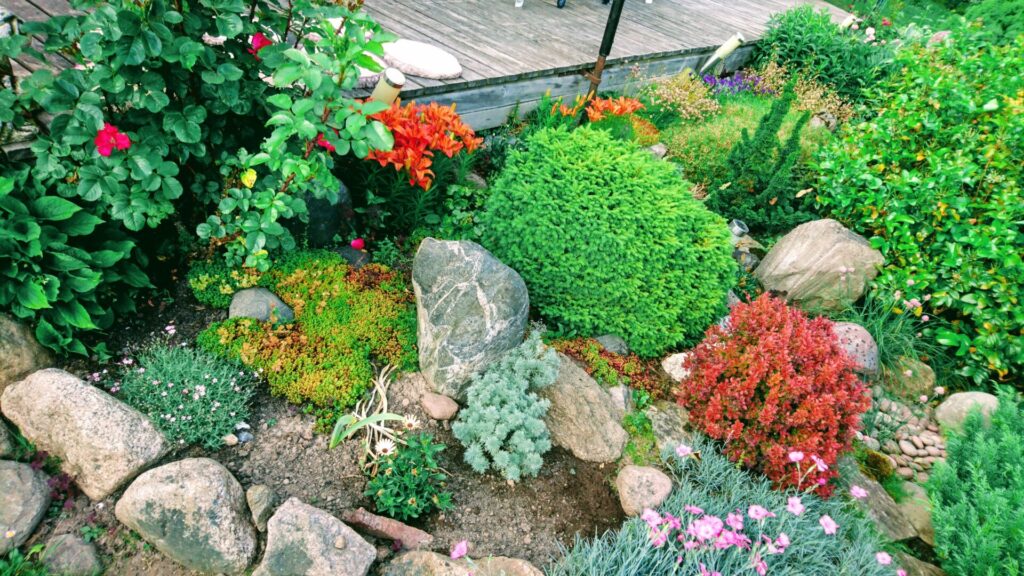
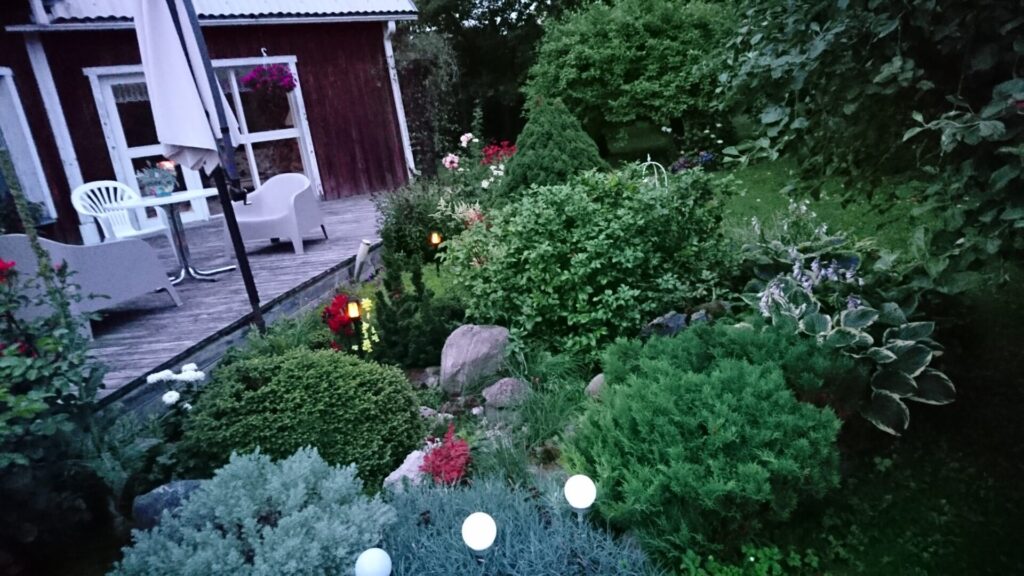


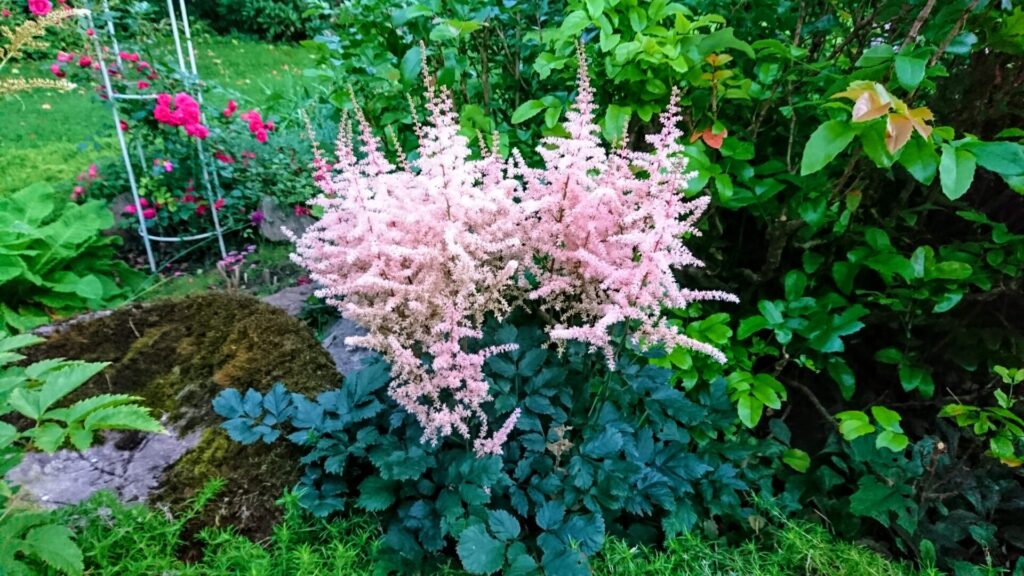
Paar aastat tagasin sain teada, et roose kimbutavate kahjurite vastu aitab monarda. Istutasingi siis rooside juurde monarda ja peab ütlema, et lehetäisid veidi esineb, aga kõik muud näljased hoiavad kaugemale. Muidu lidusin, prits pihus, rooside vahet ja ka siis juhtus, et vahel oli hommikuks Compassion lagedaks söödud. Monarda ainuke miinus selles paigas on see, et ta kipub väga nahhaalselt laiutama. Noh, osa saab jälle labidat.
A few years ago I learned that monarda helps against pests that plague roses. Then I planted monarda next to the roses and I have to say that aphids are a little present, but all the other hungry ones stay away. Otherwise, I gallopped around, spray in hand, between the roses, and even then it happened that Compassion was completely eaten bare by morning. The only disadvantage of monarda in this place is that it tends to spread very nachally. Well, part of him get a spade again.
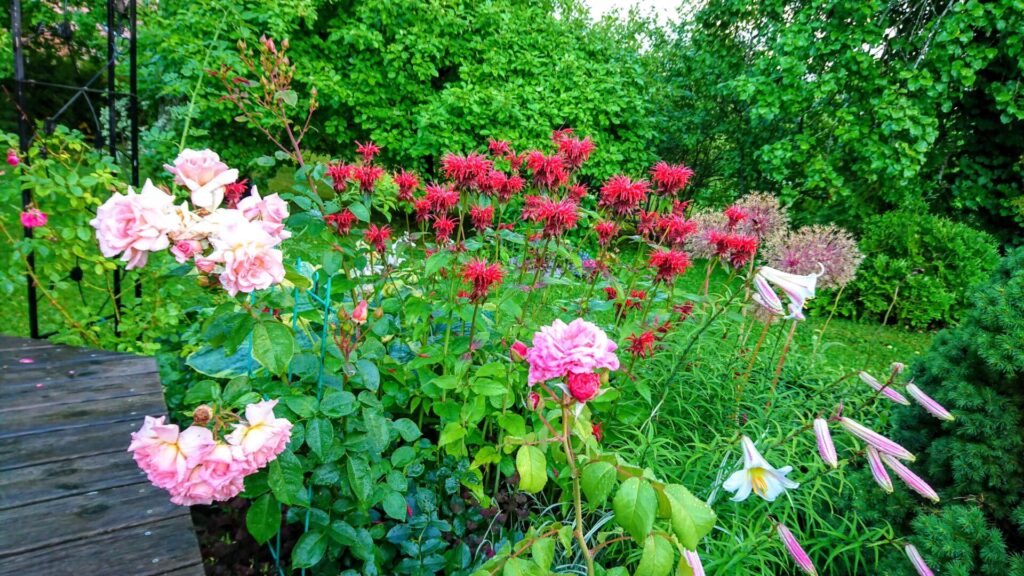
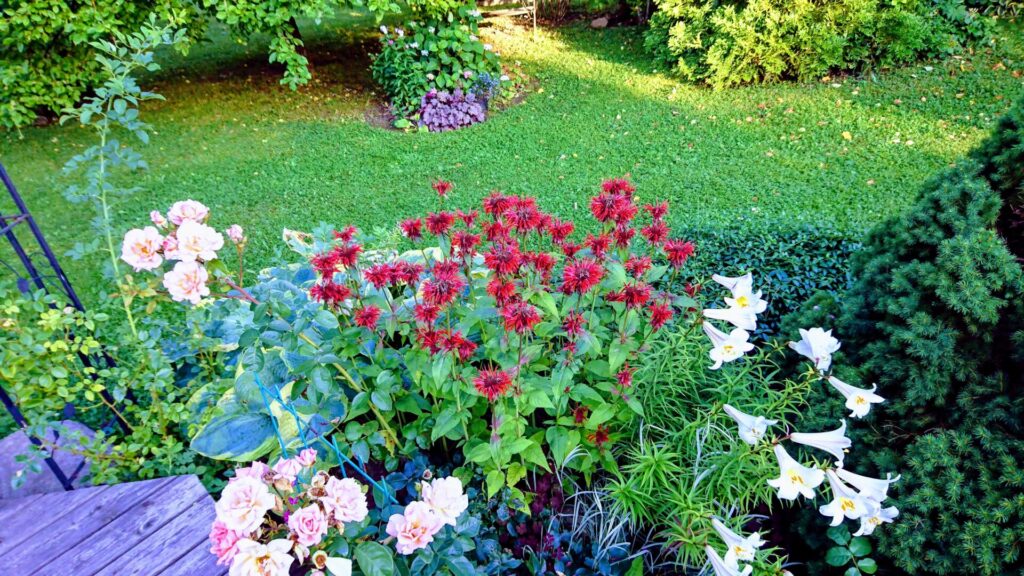
Kiviktaimlasse istutasin ka oma pisikese erinevate emajuurte kollektsiooni, kes õitsevad erinevatel aegadel. Ainsana keeldus sel aastal õieilu näitamast kevadel istutatud ahtalehine emajuur Frei Hybrida. Ja muidugi kasvatame me kiviktaimlas ka maitserohelist: hea lähedal võtta ja murulaugu õied on pealegi väga dekoratiivsed (vaata eestpoolt 2008 ja 2009. aasta pilte).
In the rock garden I also planted my small collection of different gentians that bloom at different times. The gentiana Frei Hybrida, planted in spring, was the only one that refused to flower this year. And, of course, we also grow herbs in the rock garden: it’s good to have them nearby, and chive flowers are also very decorative (see pictures from 2008 and 2009 above).

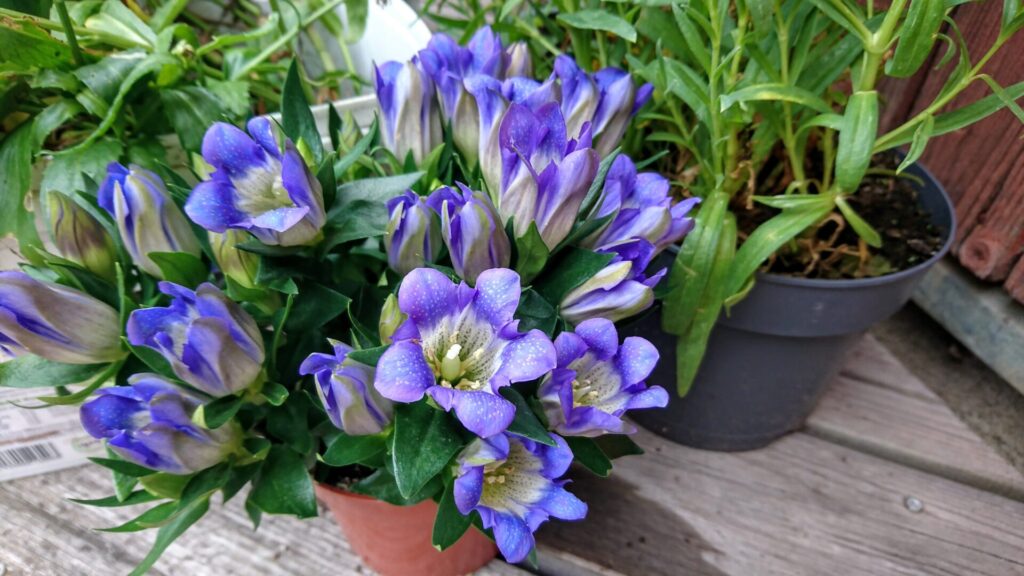
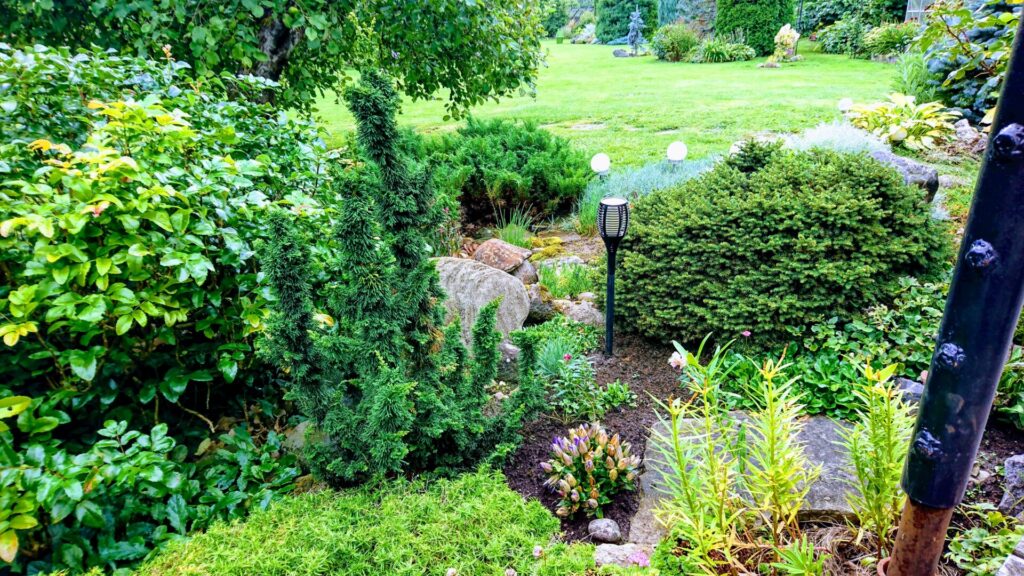
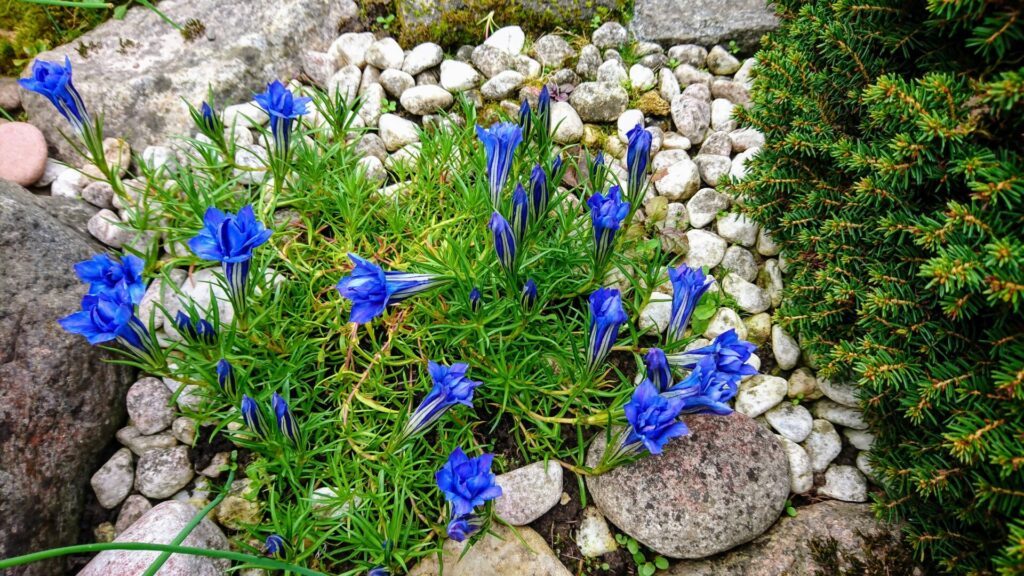
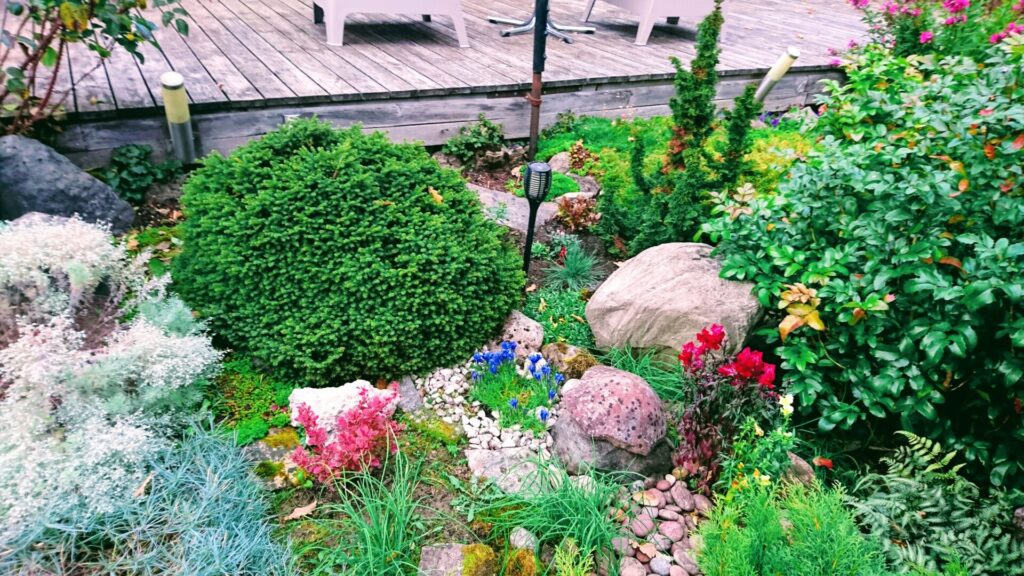
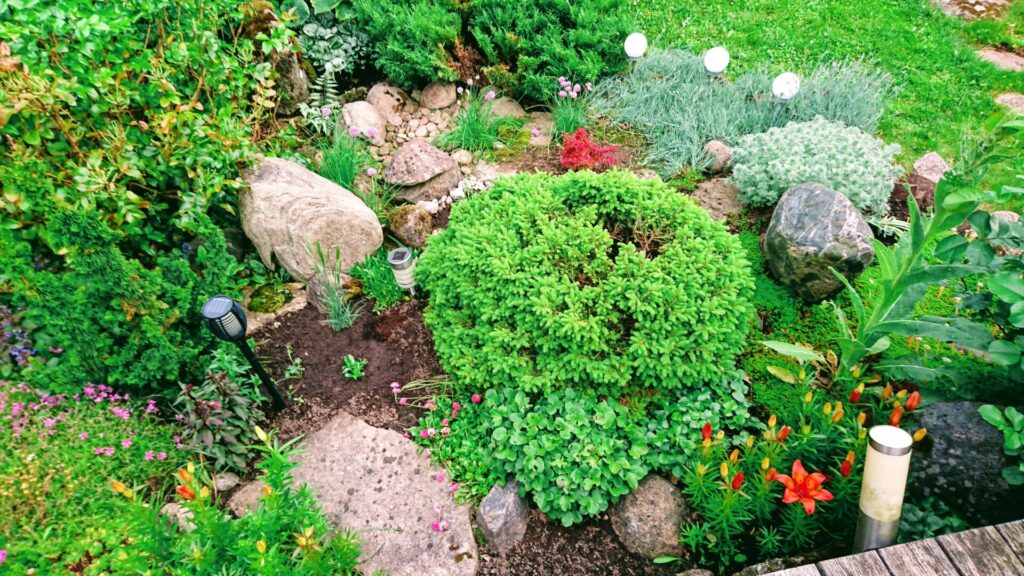
Kiviktaimla juurde kuuluvaks võib ka lugeda pisikese istutusala, mida eraldab kiviktaimlast läbikäigurada. Sinna istutasin 2020. aasta hilissügisel tõelise kiviktaimla taime – aed-mägisibul BigSam Purple Quartz. Üks tõsiselt tänuväärne taim: ilus, laieneb kiiresti ja ei pirtsuta mulla suhtes, sest selles peenrajupis on endiselt palju savist mulda. Varasemad katsetused mägisibulatega on mul igatahes kehvasti lõppenud, sellevõrra on nüüd rõõm suurem.
A small planting area, which is separated from the rock garden by a walkway, can also be considered as belonging to the rock garden. In the late fall of 2020, I planted a real rock garden plant there – houseleeks BigSam Purple Quartz. One really rewarding plant: beautiful, expands quickly and does not whine on the soil because there’s still a lot of clay in this bed. In any case, my previous experiments with houseleeks have ended poorly, so the joy is even greater now.
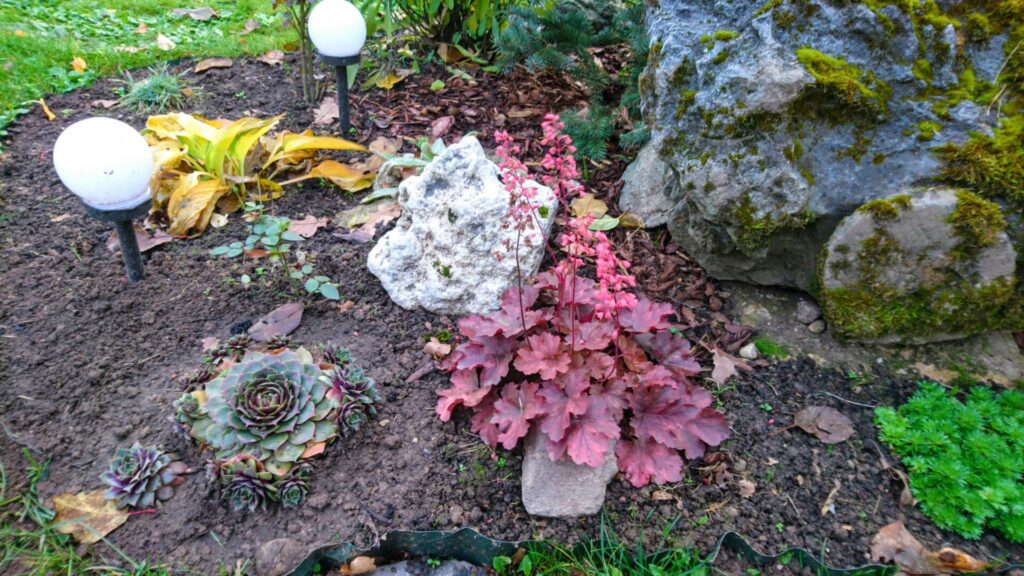

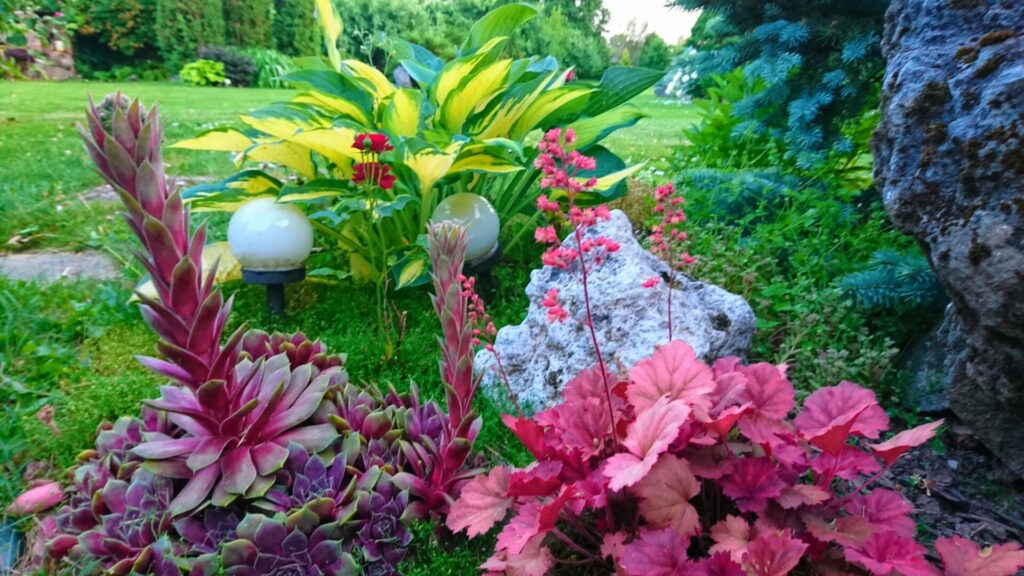
Üldiselt arvatakse, et kiviktaimla on üks väga hooldustnõudev peenravorm. Tunnistan ausalt, et enda oma kasin vaid kord-paar suve jooksul ja siis ka ainult mõne seemnetega leviva umbrohu väljakatkumiseks, enamus hooldust tähendab kevadlillede pealsete ja äraõisenud õite kokkukorjamist. Kevadel kiviktaimlas õitsejaid saab vaadata SIIT.
It is generally believed that a rock garden is a very high-maintenance bed form. I’ll be honest, I only clean ours once or twice during the summer, and then only to get rid of a few seed-borne weeds, most of the maintenance means picking the tops of spring flowers and spent flowers. You can see flowers blooming in the rock garden in spring HERE.
